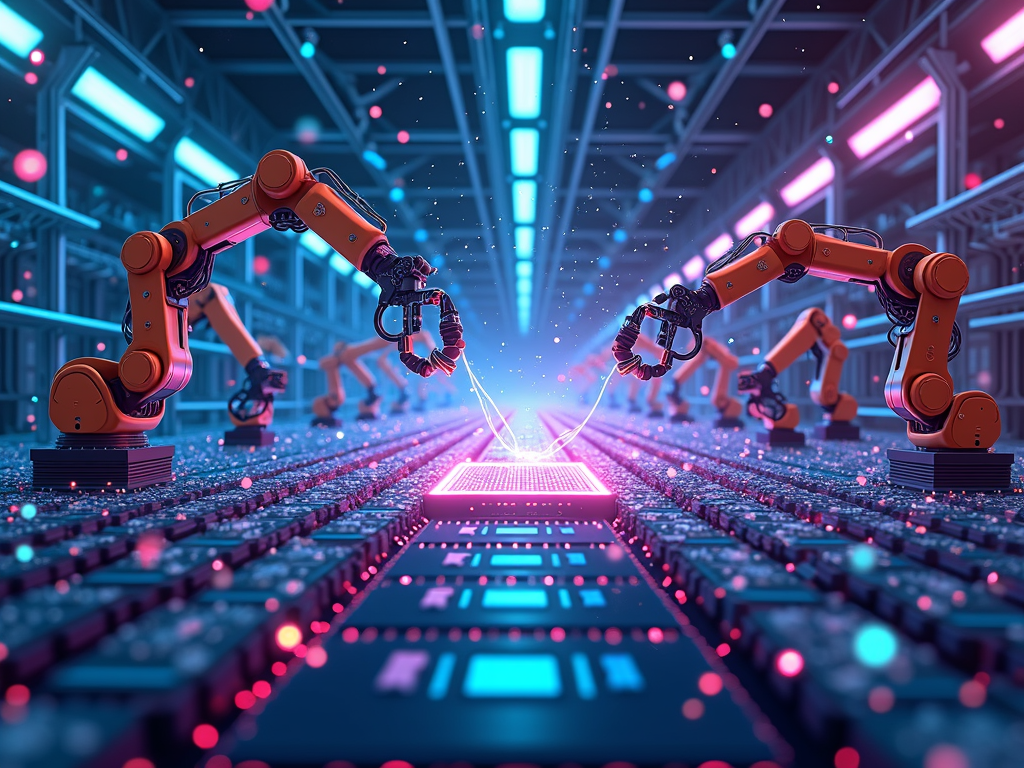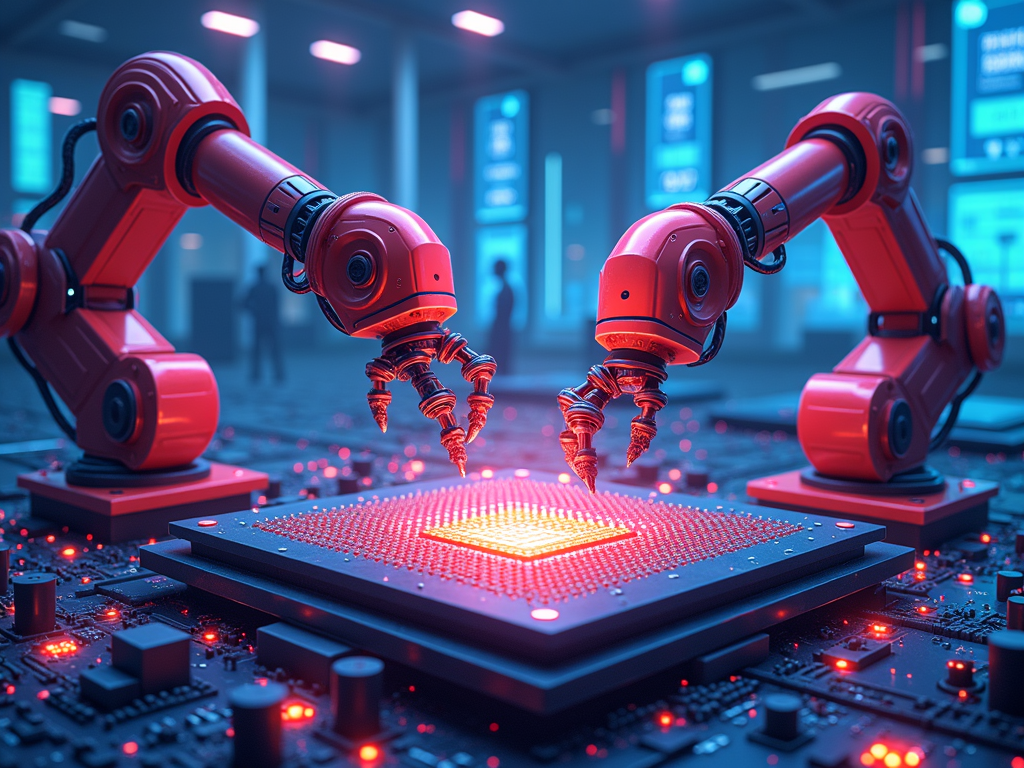Artificial Intelligence (AI) is not only reshaping industries but is also acting as a catalyst for innovation and growth in both semiconductor and software companies. As investors and private stakeholders seek opportunities, understanding AI’s role in these sectors becomes crucial. This article delves into how AI is driving advancements in semiconductor manufacturing, enhancing capabilities, and spurring growth in software development, offering insights into potential investment opportunities.
The Convergence of AI and Semiconductors: A Technological Leap

Artificial intelligence (AI) has become an indispensable catalyst in the evolution of semiconductor technology, significantly impacting how the industry designs, manufactures, and innovates new chips. The integration of AI into semiconductor advancements is driven by an urgent need for greater computing power, efficiency, and adaptability in a technology-dependent world.
AI-Powered Semiconductor Design
The design phase of semiconductors has undergone a revolution due to AI’s capability to process and analyze enormous datasets efficiently. AI algorithms facilitate the selection of optimal chip designs, drastically cutting down the time needed for design iterations. This enhancement not only boosts performance but also significantly lowers the margin for errors, providing a robust blueprint that reduces overall production costs. By automating intricate design tasks, AI tools contribute to developing faster, miniature, and more efficient chips, setting a new standard in semiconductor design.
Revolutionizing Manufacturing with AI
In manufacturing, AI technologies transform production lines, offering intelligent monitoring and control systems that forecast equipment failures and optimize production schedules. Such foresight minimizes downtimes and enhances resource allocation, promoting a streamlined manufacturing process. Moreover, AI-driven quality control systems leverage image recognition to detect chip defects with greater accuracy than traditional methods, ensuring high yield rates and minimizing waste.
Specialized AI Chips: The New Frontier
AI chips are specifically designed to improve AI workload handling, emphasizing parallel processing and reduced power consumption. These chips are vital for real-time applications spanning from data centers to smart devices to the Internet of Things (IoT). The sector has seen the emergence of training and inference chips—each with distinct roles. Training chips concentrate on raw computational prowess, supporting AI models development, while inference chips are optimized for efficient real-time processing. Notably, neuromorphic computing, inspired by the human brain, introduces a paradigm shift with chips that mimic neural networks, excelling in tasks like pattern recognition and decision-making.
Navigating Challenges and Future Prospects
Despite remarkable strides, the semiconductor industry must navigate challenges such as miniaturizing transistors without sacrificing performance, incorporating new materials into fabrications, and mitigating supply chain volatility. Nonetheless, AI’s role in overcoming these hurdles is pivotal. By driving further automation and innovation of customized AI chips for niche applications, AI is set to propel semiconductor technology into a new era of innovation and efficiency.
The interplay between AI and semiconductors highlights both a strategic partnership and a mutual dependency, laying the groundwork for unprecedented technological advancements.
AI: A Catalyst for Transformative Software Development

Artificial intelligence (AI) is reshaping the software development landscape, ushering in an era of unprecedented innovation and efficiency. By integrating AI technologies into every stage of the software development life cycle (SDLC), the industry is witnessing transformative changes in how software is conceived, created, and refined. This paradigm shift is not just a technological evolution but a revolution in enhancing productivity and creativity within development teams.
AI’s most immediate impact is observed in how it amplifies developer productivity. Through powerful AI tools, tasks such as code completion, refactoring, and automated testing have become significantly more efficient. Tools like GitHub Copilot and Tabnine parse vast codebases to suggest relevant code snippets and complete repetitive coding tasks, thus accelerating development timelines. Instead of getting bogged down by mundane activities, developers can now channel their efforts toward solving complex problems and innovating new solutions.
Moreover, AI frameworks are revolutionizing the testing phase, traditionally a time-consuming process. Automated testing tools, driven by AI, produce precise test cases that enhance coverage, ensuring software reliability with minimal human intervention. Predictive debugging capabilities allow AI to foresee potential coding errors, offering solutions proactively, thereby minimizing downtime and optimizing resource allocation.
While AI automates routine tasks, it does not aim to replace human ingenuity in software development. Rather, it augments it by freeing developers to focus more on strategic and creative endeavors. With AI handling the repetitive work, developers can explore new dimensions of creativity previously restricted by resource constraints. AI’s role extends to transforming natural language specifications into design elements, surprisingly enhancing software development jobs by unlocking new creative potentials and refining workflows.
Nevertheless, the integration of AI in development is not free from challenges. Issues such as AI’s limited contextual understanding of nuanced problem-solving and the security risks inherent in AI-trained code present significant hurdles. Furthermore, AI solutions must navigate the complexities of legal compliance, particularly concerning the use of proprietary or open-source datasets.
As the field continues to evolve, the emergence of custom AI agents tailored to specific business processes promises further advancement. These agents personalize and enhance the quality of code, predictive testing, and issue prevention, cementing AI’s role as a catalyst for innovation. The generative capabilities of AI are resetting benchmarks for quality and efficiency in the SDLC, heralding a future where AI is indispensable to the software development process.
Ultimately, AI not only accelerates development but also enriches the developer experience. By automating tedious tasks, AI not only improves coding enjoyment but also facilitates rapid learning and upskilling. Developers can swiftly adapt to new programming languages and frameworks, backed by real-time AI-guided examples and insights. As this relationship between AI and software development deepens, it promises continuous evolution, bringing forth an era marked by enhanced creativity, efficiency, and technological growth.